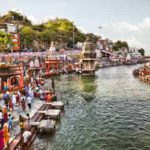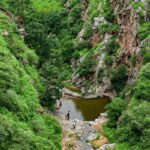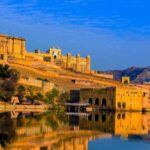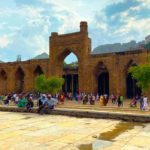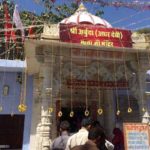Best Time to Visit Jaipur In an arid, semi-desert area that has three separate seasons, Jaipur is located. For travellers, only one season is suitable, so pre-planning is necessary prior to travelling to India and Jaipur. A warm, dry winter, an unbearably hot spring/summer and a brief yet intense monsoon season are the three seasons of Jaipur. Unsurprisingly, during the winter months, the best season to visit Jaipur is from early November to February, and this is the height of the tourist season.
Jaipur is one of the cities that is popular in India for its distinctive culture, tradition and ethnicity. Well, the harmony and the common presence often leave travellers spellbound. Jaipur is one of the busiest tourist destinations in India, with its sturdy ramparts and palatial alleys along with vibrant bazaars. It comes under the famous Golden Triangle, alongside New Delhi and Agra. Thus, during its peak season, you can expect the rush of visitors and the Best Time to Visit Jaipur is during the winters when the Jaipur climate lives at a temperature ranging from at least 13 degrees to 25 degrees. Nonetheless, Jaipur offers a hot, semi-arid climate and temperatures throughout the year remain relatively high.
During the summers, the Jaipur weather jumps up and scorches between 35 degrees and a height of 48 degrees, which is incredibly hot and dry and deadly. The temperature in Jaipur varies between 30 degrees and 37 degrees in the month of April, while it is at its best in the months of May and June. In this part of the country, Monsoon is occasionally, but medium to heavy rainfall can be expected from July to September and the temperature in Jaipur drops to a minimum of 30 degrees and cudlles to a maximum of 40 degrees.
The temperature in Jaipur nestles at 25 degrees and 30 degrees from October and decreases to 15 degrees in November. The temperature will reach a low mercury level of 4 degrees from December to February and this is the perfect time for vacations, sightseeing, and various tourist activities.
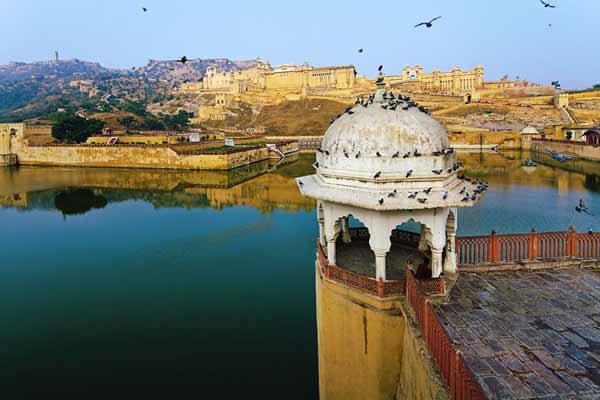
Best Time to Visit Jaipur
Travellers from India and abroad flock to Jaipur for tourism during the year. It is renowned worldwide for its forts, its temples, its lakes, its fairs and its festivals. Jaipur’s climate is arid as it is a semi-desert area. The best time & season for visiting Jaipur town in Rajasthan is winter.
Winter:
From October to March, winters are the best time to enjoy Jaipur city holidays. The days are very warm, but at less than 4 ° C, the nights are cold. When travelling, bring thick woollens. Along with the Elephant Festival in March, the Kite Festival during Makar Sankranti and the Jaipur Literature Fest in January, you will enjoy sightseeing at the historic forts.
Summer:
Summers are very hot and dry from April through June. The average temperature throughout this time is 44 ° C – 45 ° C. Hot winds blow during the day, making sightseeing virtually impossible. At this time, the Gangaur festival is celebrated. If you are planning to visit this city at this time, drink plenty of water and juices, wear light cotton products, and bring a pair of good sunglasses.
Monsoon:
Monsoons are from July to September, but low to medium rainfall hits Jaipur. If you are in town in the month of August, you can attend the local Festival of Teej.
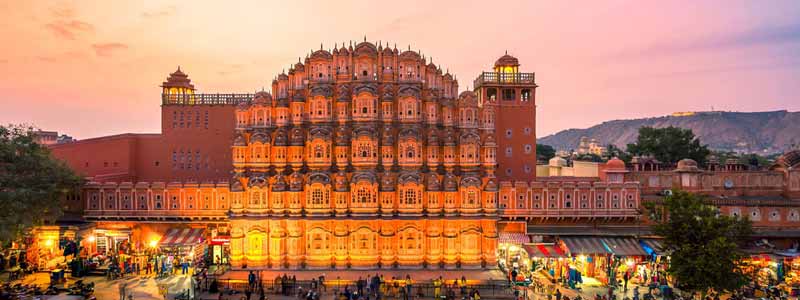
Jaipur Summers
Jaipur’s summers are dreadful and sweltering. It begins in March and lasts until May. The average temperature fluctuates between 38 and 44 degrees Celsius. It is the time of the year that makes sightseeing incredibly painful and can turn visitors into a grey mood. For almost the whole day, hot air blasts, leaving the surroundings warm and sweaty.
It is extremely necessary that you bring sufficient sunscreen blocks, shades, and water bottles everywhere you go. Do not forget to book hotels with air conditioning. Even, as much as possible, hold your umbrella and stoles. Stop visiting those places where you can get bruised and tanned. Even, by drinking plenty of coconut water and fruit juices, keep yourself hydrated. On the opposite, there are a few places you can swing by with the aforementioned precautions.
Amber Fort and Palace
A bit of amazement lies in the midst of the rugged hills of Aravalli. An elegant combination seen in this palace is the beguiling elegance of impeccable white marble and red sandstone. Never miss the ‘Sheesh Mahal’ or the ‘Mirror Palace’ that caters to a fascinating array of mirror tiles. Among the many such interesting facets, the inclusion of precious gem stones in the wall art will be the top-notch one. They’re a pure art of beauty to look at.
Hawa Mahal
Once again, one of the trademark places in Jaipur tourism is Hawa Mahal or the ‘Palace of Winds or Breeze.’ Hawa Mahal still has cool breezes in its atmosphere, no matter what season it is on the clock. That is why it was one of the most visited tourist destinations for the then Rajput families and now for many travellers during the summer holidays. Because of its earthly and cool winds, it is therefore visited mainly in the summer months.
The Elephant Festival is a traditional festival for this season. Elephants are flawlessly decked in bright mirror works and drawings here. They are then paraded through the melas, which involve activities such as elephant dancing and elephant polo as well. It’s a one-day affair in March every year before Holi.
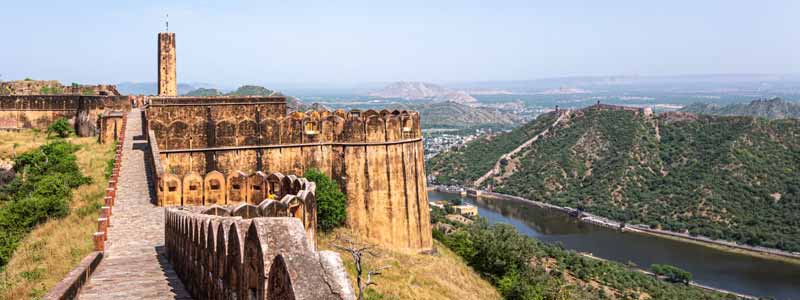
Jaipur Monsoons
Monsoons start from June to mid-September in Jaipur. Jaipur doesn’t get a lot of rainfall, or you might say it gets a lot less rainfall than the average yearly rainfall. The temperature is about 25 to 32 degrees Celsius. It’s much calmer and cooler than summer and won’t interrupt the process of sightseeing. The city looks much more colourful, greener and cleaner after light showers.
Jaigarh Fort
Each of the Pink City’s forts and palaces has a little tale in the background. Jaigarh Fort, however, has its own milestone of importance and stature. It is situated on the Aravalli Hills promontory of the Hill of Eagles. The magnificence of this fort stands out, distinctively, from other forts. It is also home to Jaivana, renowned for being the largest cannon on wheels in the world.
Sisodia Rani Garden
When this is not ticked on your list, your sightseeing will remain incomplete. It is located approximately 7 kilometres from the city. Its waterfalls, fountains and rustic pavilions are myriad. The name is derived from the late 15th-century Queen Sisodia.
It has an outstanding blend of Mughal architecture that culminates in the Indian art style. The walls depict Lord Krishna and Radha’s charming love storey. Within the garden, there are several temples to drop by. A lovely array of unusual flowers and verdant greenery can be seen all around.
Local Bazaars
In every lane of the streets, you can find plenty of local shops and bazaars around the corner. They have these lanes engraved inside. In these stores, you will be enticed by the sheen and flamboyance. You’ll get anything and everything here, from footwear to handbags to home decor things.
Of these, the most visited are Bapu Bazaar and Lohri Bazaar. Ladies, it’s a call from you. At true nominal costs, you get to see timeless jewellery, cute shoes, sarees, Morjis, totes etc. After visiting those markets, it is literally difficult to return empty-handed. You’re certainly going to enjoy the items featured here.
For its incredible festive celebrations, Jaipur is renowned. Chokhi Dhani is portrayed with a splash of colour, a dollop of vivacity and a slice of love. It is a recreation of the old-style village of Rajasthani and the state’s only five-star rated village. Tap your foot to the traditional folk music and ethnic dance groves that occur each evening. To welcome ethnicity and revelry with great pomp and show, Dhani’s door of entertainment was opened.
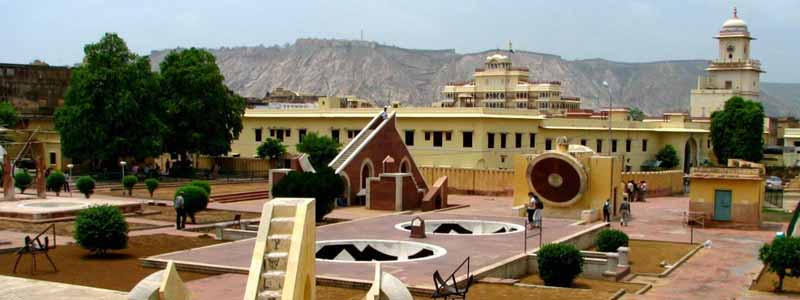
Jaipur Winters
In Jaipur, winters are cold, calmer and easy. Visiting Jaipur is likely to be the best season. Nevertheless, it is also the moment when the resorts charge maximum prices and, due to pre-bookings, it is often even difficult to get a vacant bed. The temperature can often drop to 3-4 degrees Celsius in the evening hours. So do take your winter clothes with you.
It starts in October and continues through February. The mean temperature varies from as low as 7 to as high as 31 degrees Celsius during the day. It’s when the heat in the city decreases for cool and pleasant weather to tour. Therefore, in these months, it is recommended to use viewing exclusively.
Jantar Mantar Observatory
The ruler of Jaipur invented an instrument to research space in the mid-16th century. In Jantar Mantar, the largest of these instruments is located. It has been approved as a World Heritage site by UNESCO. There are several such technological gizmos and architectural epitomes in the planned town of Jaipur.
This includes many methods that can calibrate accurate time, calculate the distance from Earth of the Sun, track the eclipse cycles, etc. One such instrument, called the Samrat Yantra, is said to predict monsoon times and arrivals. It is the world’s biggest sundial. If you’ve got astronomy hots, well then you don’t need to fret anymore. For all your astronomy requirements, this is your go-to.
Abhaneri Stepwell
It translates into a city of brightness in Hindi. There are the remains and ruins of the town and the tourists enjoy it with utter pleasure. The phase well was built during the reign of the Chauhan Dynasty. It was designed as a tribute to the goddess of joy and happiness, Goddess Hashat Mata.
The old move well is made up of approximately 3000 steps across 13 stories. It goes down into the ground to about 35 metres, making it the deepest move in the world.
In that period, it was established by the kings with the notion of maintaining water and severing the problem of water scarcity. Large quantities of clean and cool water may well be stored in this step. The temperature of water at the end of the well was quite colder than the top of brim.
Rambagh Palace
It is an excellent attraction that makes it a luxury level accommodation in the city. Its architecture is a fine combination of Mughal-era-inspired artistic ideals. It was first born as a garden home, then turned into a royal hunting lodge into a royal suite that included glam and glitz.
Tourists believe this luxury brings them back to the ruling kings’ days and their aristocratic lifestyle. If you wish to benefit from a discount, you can book your rooms online.
Many festivals and celebrations are also welcomed by this time of year. The Festival of Jaipur Literature is highly acclaimed. At this festival, bibliophiles flock around the edges of the country. ‘Teej‘ is also a local festival during this time of season that is celebrated in the region.
Jaipur hosts the ‘Kite Festival’ on Makar Sankranti accounts. This is a special celebration of the festival, where hundreds of kites are flown into the sky. Kites fight off their war for supremacy with fragments of mirror bits on string lines. It’s one such festival that brings together a colossal audience and unites the city.
While winter is said to be the best season to tour around the region, during the year, Jaipur will always host you with open arms. You can also rest at Jal Mahal, City Palace, Birla Mandir, Galtaji, Govind Dev Ji Temple, Garh Ganesh Temple, Moti Dungri Ganesh Temple, and Jaipur Zoo.

